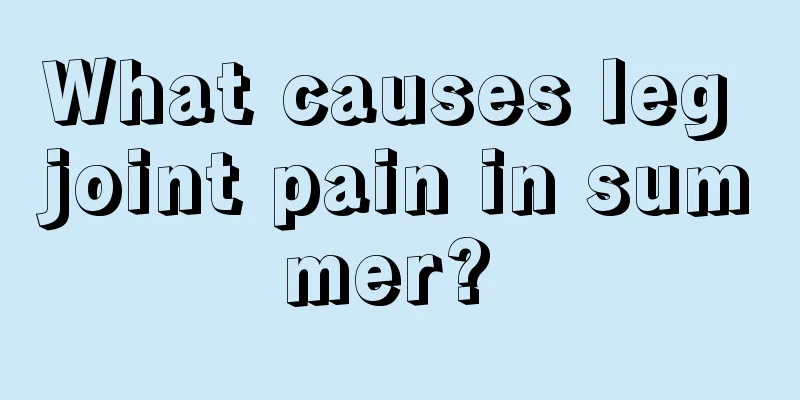What causes leg joint pain in summer?

|
Leg joint pain in summer can be said to be a problem that bothers many people, so we should pay attention to understand the causes. Meniscus injury, fat pad strain, and knee joint trauma may all induce these pains. 1. Meniscus injury Meniscus injury is a common injury among athletes. When the lower limbs are weight-bearing, the feet are fixed, and the knee joints are slightly flexed, if the knee is suddenly excessively internally rotated or externally extended (for example, in volleyball, when a player suddenly turns around and dives to save the ball while defending), it may cause a meniscus tear. Meniscus injury will cause an obvious tearing feeling in the knee, followed by joint pain, limited movement, and limping when walking. The joints show swelling and a feeling of slipping, and there is a popping sound when the joints move. 2. Fat pad strain: The fat pad fills the gap in the front of the knee joint, which strengthens the joint stability and reduces friction. The cause of fat pad strain may be due to trauma or long-term friction that causes the fat pad to become congested, thickened and inflamed, and adhere to the patellar ligament, thereby limiting the movement of the knee joint. This type of injury often occurs in people over 30 who frequently walk, climb mountains, or squat. Patients will feel pain in the knee joint, which worsens when it is fully extended, but the joint movement is not restricted. Symptoms are obvious after exertion. 3. Traumatic synovitis of the knee The synovium of the knee is one of the main structures of the knee joint. Synovial cells secrete synovial fluid, which can keep the articular cartilage surface smooth and increase the range of joint motion. When the synovium is damaged due to trauma or excessive strain, a large amount of fluid will accumulate, increasing the pressure within the joint. If it is not eliminated in time, it can easily cause joint adhesion and affect normal activities. Patients will feel pain, swelling, tenderness in the knee joint, and a frictional and astringent sound in the synovium. The most obvious characteristic of pain is that when the knee joint is actively and extremely extended, especially when the knee extension movement is performed with a certain resistance, the pain below the patella will be aggravated, and the pain will also be significantly aggravated during passive extreme flexion. 4. Knee ligament injury: The stability of the knee joint is relatively poor when it is slightly flexed. If it is suddenly subjected to external force and causes eversion or inversion at this time, it may cause injury to the medial or lateral collateral ligament. Medial collateral ligament injuries account for the vast majority of clinical cases. Taking this injury as an example, the patient will have a clear history of trauma, pain and tenderness on the medial side of the knee, pain that worsens when the calf is passively abducted, swelling on the medial side of the knee, and ecchymosis after a few days. Knee joint movement may be restricted. |
<<: What is the reason why my knee suddenly hurts and I can’t bend it?
>>: What causes leg joint pain in cold weather?
Recommend
The difference between Qipi Pills and Jianpi Pills
The differences between Qipi Pills and Jianpi Pil...
The advantages and disadvantages of wine
Wine is a type of alcohol made from grapes, and i...
Is malignant melanoma hereditary?
Malignant melanoma mainly occurs in human melanoc...
How can rectal cancer be detected
Rectal cancer is a common recurrent disease in li...
Tips on how to choose mangoes
Speaking of golden mangoes, many people will droo...
How should patients with advanced liver cancer arrange their diet? The diet for advanced liver cancer should follow three principles
Speaking of liver cancer, many people will be afr...
What fruits can refresh your mind
In fact, many people now live their daily lives i...
What are the methods of eye massage for eye bags
Because the skin around the eyes is very thin and...
How long does it take to wash off honey after applying it on your face
We all know that honey is a very viscous liquid, ...
How to exercise after treatment of early liver cancer
How to do rehabilitation exercises after liver ca...
What is the best medicine to treat alcoholic liver disease?
Patients with alcoholic liver disease should be c...
How many generations can pancreatic cancer be inherited
Pancreatic cancer is a highly malignant digestive...
Exercises to mobilize the cervical spine
The main cause of cervical spondylosis is long-te...
How is the effect of acupuncture points for hand numbness in cervical spondylosis
Cervical spondylosis is a common disease in today...
What are some tips for life
In fact, we often encounter some difficulties in ...









